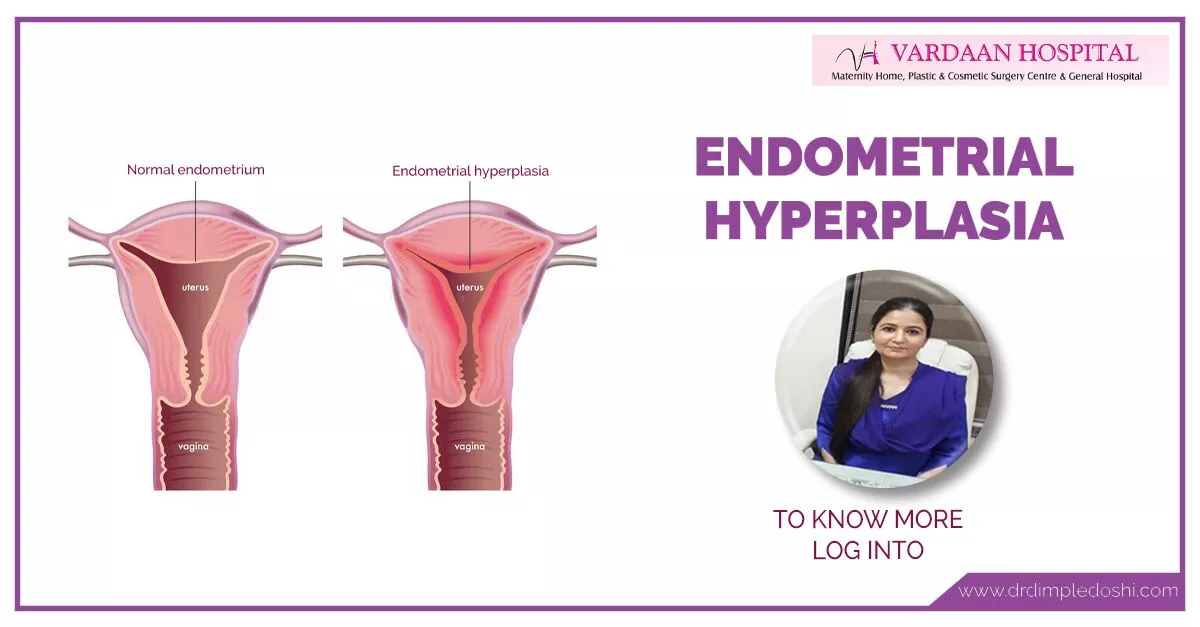Comprehensive Endometrial Hyperplasia Treatment in Goregaon West, Mumbai

What is Endometrial hyperplasia?
Endometrial hyperplasia; also called thickening of the inner lining of the uterus is responsible for menstrual irregularities in women. It happens due to the overgrowth of the endometrial cells inside the uterus. It is also called thickened endometrium.
Causes of Endometrial Hyperplasia
Most cases thickened endometrium happen due to high levels of female hormone; that is estrogen and insufficient levels of progesterone which usually counteracts the growth enhancing properties of estrogen. This happens in:
- PCOD
- Estrogen replacement therapy
- Estrogen producing tumors
- Medicines used to treat breast cancer like tamoxifen.
Symptom of Endometrial Hyperplasia
- Heavy menstrual bleeding; heavier or lasting for a longer period of time
- Frequent menstrual periods.
- Intermenstrual periods.
- Postmenopausal bleeding.
Types of Endomterial Hyperplasia
WHO Classification of thickened endometrium
- thickened endometrium without a typical cells; either simple or complex
- thickened endometrium with atypia
Diagnosis of Endometrial Hyperplasia
A detailed history taking and examination by your gynaecologist may raise a suspicion of you having thickened endometrium; and this can be confirmed by:
- Ultrasonography
- Endometrial biopsy
- Pap smear may reveal presence of atypical gland cells.
Complications of Thickened Endometrium
Thickened endometrium is a significant risk factor fo the development of endometrial cancer or uterine cancer.
If not treated; thickened endometrium progresses to uterine cancer or adenocarcinoma within 20 years in:
- 28% of cases with atypia and
- about 5% of cases without atypia.
The rates are more favorable in cases with simple thickened endometrium rather than complex hyperplasia.
Treatment of Endometrial Hyperplasia
Conservative Treatment:
By giving hormone therapy like cyclic or continuous progetin treatment.
Surgical Treatment
Hysterectomy means removal of uterus.
Medical Code of Endometrial Hyperplasia
ICD-10 Codes for Endometrial Hyperplasia:
- N85.00: Endometrial hyperplasia, unspecified
- N85.01: Simple endometrial hyperplasia without atypia
- N85.02: Complex endometrial hyperplasia without atypia
- N85.03: Endometrial hyperplasia with atypia
CPT Codes for Endometrial Hyperplasia Diagnosis and Treatment:
- 58100: Endometrial biopsy (without suction) for diagnosis of endometrial hyperplasia
- 58558: Hysteroscopy, surgical; with sampling (biopsy) of endometrium and/or polypectomy, with or without D&C (dilation and curettage)
- 58120: Dilation and curettage (D&C) of the uterus for treatment of endometrial hyperplasia
- 58356: Endometrial ablation, used to treat abnormal uterine bleeding associated with endometrial hyperplasia
Dr. Dimple Doshi at Vardaan Hospital; believes prevention is better than cure, and thus apart from the precise treatment guidelines; preventive measures are an essential part of our consultations with the patients who have either had it or want to know more about it.

